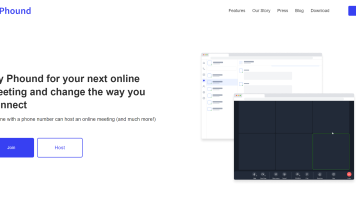Please enjoy the April 2007 Publisher’s Outlook from IMS Magazine:
———
DSP Resource Board Vendors Expand Focus
The last few weeks has seen an explosive amount of news in technology and communications and trying to justice to it all in a single written piece is impossible. Still I saw many things this week worth pointing out and providing some analysis on the technologies that will ultimately comprise the world’s future IMS network. Instead of focusing on a random sampling I will set my sights more on a single phenomenon in this piece.
I would have to say the largest trend I have seen lately is that of development program and ecosystem growth. Ten years ago there were few choices for developers if they wanted to write applications for the communications space. Some board vendors, TSAPI, TAPI and application generators were the basic options. There are now virtually infinite choices for developers. There is Skype, Asterisk and myriad other open source choices. There are development programs from Avaya, Cisco, Nortel, 3COM, Pactolus and many others.
Even service providers like Packet8 and SunRocket seem to be exploring opening up APIs so other developers can gain access to their platform and add value. I imagine Vonage too has this concept in the works.
Then there is AppExchange by SalesForce.com and even the new entrant, Xcerion’s XIOS operating system which lives in a web browser and is based on XML. The latter is not a communications play but who knows how it will evolve over time.
Perhaps most important of all the development environments is how the entire suite of Microsoft Development tools will be available to help developers come up with new communications applications.
In short there is now so much choice, developers can have their pick of platform and language. I would imagine first-time communications developers are bewildered.
While all these options are fantastic for developers and customers, the myriad choices may be putting some pressure on DSP resource board vendors to extend their development communities more quickly than they would like. Note that these board vendors also have HMP-based solutions (using the host processor for media processing instead of the DSPs on the plug-in boards) but for now I will refer to this group as board vendors. These companies consist of Dialogic, Cantata, NMS, Aculab, Pika, AudioCodes and others. It should be noted that AudioCodes, Cantata and NMS have many other products besides boards in their portfolios these days.
But something interesting is happening in the board world. In the last few months there have been rumblings of change/expansion among traditional vendors. For example, Aculab has moved up market by launching a line of communications appliances which are powered by their DSP-based solutions but are easier to configure and manage. Think of them as black boxes that perform fixed functions well. So for Aculab they have moved up the food chain. For more details check out this detailed interview about the Applianx family of products which will include gateways and transcoding solutions.
As for Dialogic, for some time now they’ve been offering all sorts of things besides boards: turnkey gateways, SS7 servers and gateways, and various other "higher" level products as well. Indeed, from a marketing standpoint, Dialogic has been working hard to make sure they aren’t seen only as a “board vendor”.
As it happens, I recently attended their Dialogic One conference and met with many company partners. These companies are absolutely thrilled with the New Dialogic under the leadership of CEO Nick Jensen.
Nick is focusing on generating the tremendous revenue goals he outlined last year in Portugal which amounts to doubling sales in three years. One step towards this goal is adding new distributors and the company has recently added five more of these. But this sort of growth, while good, won’t likely be solely responsible for the massive revenue explosion predicted by Nick.
So how will this growth be achieved? It would seem one way is through partners such as LumenVox. I spoke with company CEO Ed Miller and he told me things are doing very well. The company is expanding support for myriad languages and dialects. Thankfully for board vendors, Speech is a resource-intensive application and could be a great way to boost sales. Still it likely isn’t going to be all that is needed to generate the massive increases all board vendors desire.
Nick thinks video will provide a growth engine for the future of his company. Now, I have been a skeptic of video in the past. Not that we won’t be using video. In fact I have watched videos online since the mid-1990s. The question is just how will anyone besides Google and content providers make any money from it?
After many discussions at the Dialogic One conference it seems the intersection of video and mobility is where the money will be made for developers and manufacturers. Areas to look for are transcoding video from one format to another and streaming of video feeds to mobile devices.
Of course there is mobile videoconferencing and even the potential for digital avatars to be used by companies and individuals.
In addition, Nick believes videos will replace ringtones. So when your kids are calling you could see a video on your phone of your kids telling you they love you. The transcoding opportunity could be a massive one as service providers interconnect their disparate video coding systems to interoperate. Streaming too could be a very lucrative opportunity.
Virtual touring could be an area to watch as well. For example, Plantronics has a new 18 wheeled truck they drive around the country to provide a trade show booth on wheels. When you take the tour of the inside of the trailer you can use one of the company supplied iPods to learn where everything is and what each product does.
If this idea works with an iPod wouldn’t it work better if it linked to your cell phone, was video enabled and took advantage of GPS? Imagine virtual tour operators in cities where your cell phone tells you your options and directs you where to go.
You could be presented with the following in Manhattan for example:
• Restaurants
• Museums
• Attractions
You click on Museums and would be directed to the location of choice. Once there you get a tour of the facility with descriptions of the various artwork choices you have made. You can even see what the most popular paintings are as the carrier would have this information in their databases.
Video clips could be available to tell you the significance of a painting. You could see a clip of the city in Holland where Van Gogh grew up. You could even see a live webcam view of the area of the country he was from.
In addition you could click a button to see other expressionist artists. You could even see which ones are in the museum or city at the moment.
Today this scenario is a bit far-fetched but can anyone really think this won’t happen? As of now it is anyone’s guess who will provide this sort of service but I imagine Google, Yahoo and Microsoft would love to be extracting revenue from such opportunities. It may even be IMS which enables the above scenario to take place. Think about the ads that can be shown in such a scenario. I can definitely see Snickers advertising in the museum, for example. And for wireless carriers, this sort of service makes consumers stay connected all the time — something very good for the bottom line.
So the pace of change in the communications space continues to increase and board vendors are looking beyond their traditional markets to find new areas to fuel their growth. It will be an interesting journey for these vendors as they explore new opportunities in the market. It will also be exciting to see if there are enough customers in the video and appliance space for Dialogic and Aculab to hit their numbers.
One thing is for sure. The communications market continues to evolve at an ever-increasing pace and opportunities are there for the taking. One has to wonder — with all the potential for exciting new communications business models, what will be the killer applications of tomorrow?
Many of the communications killer applications of 2008 will be discussed at the Communications Developer Conference (www.commdeveloper.com) taking place May 15-17 in Santa Clara, CA. Expect to see the traditional board vendors such as Aculab, NMS and Audiocodes as well as the ability to network with Cisco, Skype, Avaya, Digium/Asterisk, Nortel, Pactolus, Inter-Tel, Mu Security, Data Connection, VoiceAge and many others.





